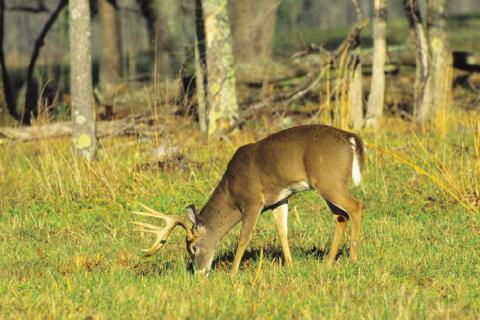Ron Jolly | Originally published in GameKeepers: Farming for Wildlife Magazine. To subscribe, click here.
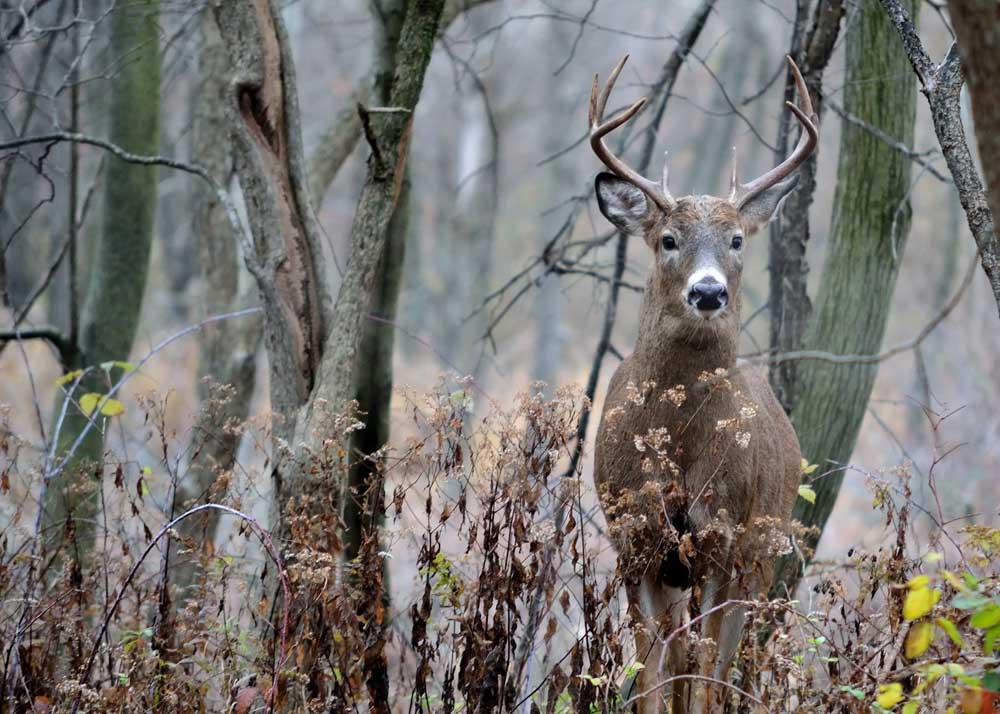
Managing property for whitetail deer is a popular trend these days. For my wife Tes and me, managing our small Alabama farm for whitetails is not a passion, it is an obsession! Most of my happy dreams are visions of mature whitetail bucks. It has been that way since I was a child! I blame my dad because he introduced me to deer hunting at an early age. Back then any eight-pointer was about as big as I could imagine. Any buck was a trophy. Now, decades later I still dream of whitetail bucks, but the bucks of my dreams today are much different than those of my youth.
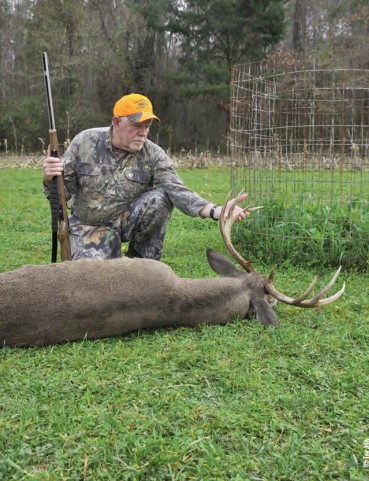
of his farm to date, a 235-pound 21-inch inside spread
nine-point they had named “Niner.”
When I was young there were no “Gamekeepers” or “Quality Deer Management Association.” In fact, I do not recall any organizations that promoted the management of whitetail deer or their habitat. In those days shooting a doe was a mortal sin. The only antler restriction on bucks was a minimum of “three-inch beam length” for spikes. You could legally take three bucks per season. Needless to say, “trophy” bucks were rare.
Then, in the early 1980’s I witnessed the transformation of a large property in Louisiana into a deer hunter’s paradise. Following guidelines set by Mississippi State University, a single family member took control of Somerset Plantation in northeast Louisiana and began implementing rules designed to allow bucks to reach four years of age and providing better nutrition for the herd. Three years later that 5,000-acre piece of property was producing 150-inch bucks weighing over 200 pounds. In the 1990’s, properties like Cottonwood, Willow Point and Tara further demonstrated to me that age and nutrition were keys to growing big whitetail bucks.
The Dream
For my wife, Tes, and me the dream has always been to own a farm and manage it for wildlife. That dream came true in 2007 when we were given the chance to buy her father’s 210-acre property in Alabama. My history with the Randle Farm began in 1996 when Tes and I married. From the beginning Ned allowed me to voice my opinion on how to improve the farm for wildlife. By 2007, much of the foundation for what the farm is today was already in place.
One major issue was too much open ground. This open ground, approximately 60 acres, was Bahia grass pastures. These pastures were cut for hay in late summer and offered no real value to deer. This problem had been partially addressed in 1995 when Tes and Ned planted 25 acres of open pasture to loblolly pines. By the year 2000 those 25 acres offered excellent bedding for deer.
Another issue was the placement of the major food plots. Most of the “killing fields,” fields that attracted the most deer, were located near the property borders. In 2001 Ned, Tes and I planted 10 more pasture acres to pines in the interior of the property. Within this planting we left two acres open to create a food plot. In 2003, we planted another 10 acres of pines and left another two acres open for another food plot. These plantings of pines and new food plots were in the interior of the property. The idea was to draw deer further into the property and create bedding areas.
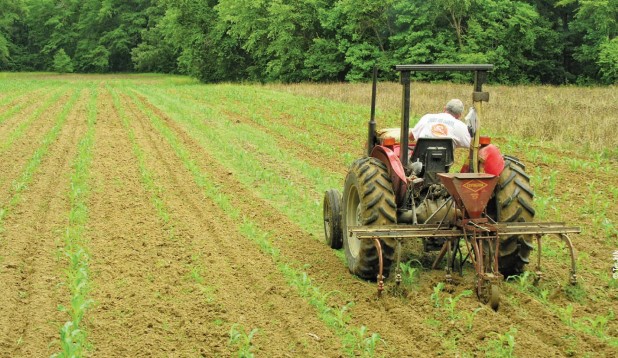
seed was cost prohibitive, but a program offered by National Wild Turkey Federation allowed
members to purchase seed through the Federation at a drastically reduced price.
In the spring of 2001, we sprayed the first new food plot with 1.5 quarts of Roundup to eliminate the Bahia grass and left it idle until late summer. We broke the ground in early September and planted it in a clover mix. Our goal was to establish summer forage for our deer.
In 2003, we repeated the process with the second new plot. Both plots became summer staples for a good number of deer and we began seeing more bucks. The combination of new bedding and year round food were beginning to pay dividends. That winter Tes killed a mature 11 point. Tes nephew Casey killed a beautiful mature 10 point later that season. Harvesting these two bucks gave us the reward needed to make us want to do more.
Bite The Bullet
The decision to target a certain age class buck was one that raised several issues. First, how old was a shooter buck? Second, how do you identify that buck on the hoof? Third, what could we do to attract and hold that age class buck on a small farm? The answers to these questions were the subject to some serious debates. We met with neighbors and discussed their goals. It was obvious we were all hunting the same deer and we all agreed to let young bucks walk.
Our first goal was to shoot bucks three years old or older. I had spent a lot of time hunting at Tara and Willow Point in Mississippi. Their standards for identifying a shooter buck were as follows:
A buck must meet any three of the five following criteria:
- 16-inch inside spread
- 185 pounds
- 18-inch main beam length
- Four-inch antler circumference
- Six-inch or better tine length
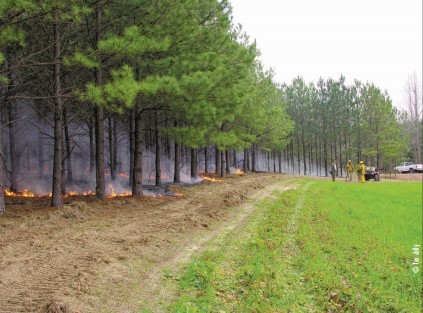
non-flammable material surrounding your area like a plowed
area, a clover plot or an area back-burned to remove the fuel.
95 percent of the bucks killed at Tara or Willow Point meeting at least three of these five standards were three or older. The answer to the last question of attracting and holding older bucks was obvious—food and cover. With that in mind we began working to improve both.
One giant leap was made with Roundup Ready corn. Until then the genetically engineered seed was cost prohibitive but a program offered by National Wild Turkey Federation allowed members to purchase seed through the Federation at a drastically reduced price. In the spring of 2004 we broke ten more acres of Bahia pasture and planted it to corn.
Areas were designated each year for tree planting. Several existing plots were planted with a variety of soft mast such as persimmon, crab apple, pear, or plum fruits plus hard mast from sawtooth oak, Chinese chestnut, and Chinquapin oak. The Big Oak plot was converted to an orchard in 2006. Autumn olive and American beautyberry was included among multiple fruit and hardwood species. Chufa for turkeys was planted between the rows of trees. In February of 2008 we planted five more acres of pasture to shumard and cherry bark oak. We also designated 20 acres of mixed hardwoods and pines as a sanctuary for deer.
Old mineral licks were supplemented with BioLogic’s Whitetail Addiction. Later, new sites were established using Bio Rocks topped with Rock Topper. These lick sites were soon being pummeled by deer year round. They also served as excellent locations for trail cameras. Today we maintain them year-round with Bio Rocks and Full Potential powder.
From 2004 through 2008 we killed six bucks on the farm. In 2005, Tes arrowed a four-year-old eight point that weighed 205 pounds. He was the heaviest deer taken on the farm to date. The other five were all three year olds weighing less than 190 pounds. We were beginning to question ourselves. We just were not seeing the results we were expecting. Then in August 2008, a trail camera located at one of the mineral sites captured a buck that got our attention. We named him Stickers because of the kicker points on his G-2s. That one buck told us we were on the right track.
Success Breeds Success!
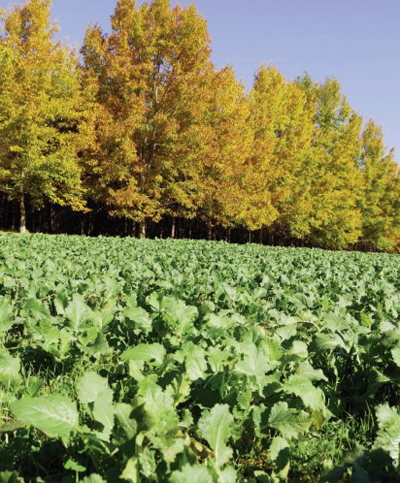
plots. Most of the killing fields, the fields that attracted the
most deer, were located near the property borders. Over
time that was changed.
In 2009, we stepped up our trail camera program with the purchase of four Primos TruthCam 35 cameras. These cameras recorded mature bucks visiting the clover and corn plots almost every night. While bow hunting in the fall I had close encounters with two mature bucks that more than met the criteria as shooters.
Incredibly, Tes tagged three four-and-a-half-year-old bucks during muzzleloader and rifle seasons, one each month in November, December and January of 2010. We knew two of the deer from summer trail camera photos. The November buck was a 210-pound wide-racked 135-inch eight point we had never seen. The December buck was a 225-pound non-typical 11 point with double right main beams and three long brow tines that had broken off since he appeared in an August 16th trail camera photo. The January buck was a trail camera star we’d nicknamed Hoss, a 225-pound 20-inch spread eight point who was a regular visitor to food plots and mineral sites.
Looking back you would think Tes’ 2009 season would be the benchmark that proved the management program on the Randle Farm was successful. However, to us, that first photo of Stickers marked that point. Just knowing that buck was on the farm kept us on track.
Take the Plunge
All doubt about our practices was removed after the 2009 deer season and we were all in! At this point we knew what we could expect and adjusted our shooter buck formula from 185 pounds to 200 pounds to target four-year-old bucks and pass three year olds. We also stepped up our efforts to improve cover and provide more food.
The three pine plantings form two plantations. The oldest plantation is 25 acres and is broken by two small hardwood drains. In 2007, we did a prescribed burn on this stand and thinned it in 2010. The second plantation is comprised of the trees planted in 2001 and 2003. We plan to thin these stands in 2016.
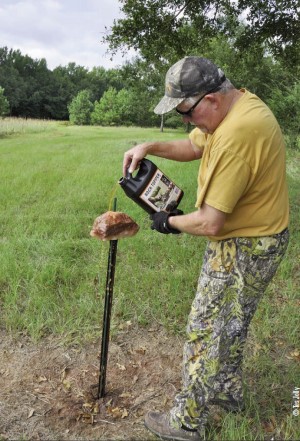
BioRocks topped with Rock Topper. The
author elevates the BioRock to keep them
out of the reach of hogs.
Between the plantations is open pasture dotted with oaks and large native pine trees. The closest distance between the plantations is 300 yards along a natural draw between two ridges. In the spring of 2006 we plowed the draw to release the natural seed bank.
Today we call that area Ned’s Brushy Draw in memory of Tes Dad who passed in January 2009. Briars, sedge grass, honeysuckle, pine saplings and dog fennel dominate. In 2008, we mowed two 20-foot-wide viewing lanes across the draw. We then mowed 10strips the length of the draw. Each year we rotate the mowing to 10 more lanes. The idea is to keep the pine, oak and gum seedlings from forming a canopy that will strangle out the briars, honeysuckle and dog fennel. The Brushy Draw is now a deer highway through the center of the farm.
Our plan is to plant 20 acres of longleaf pine in December 2014. This planting will complete our long term goal of utilizing the entire farm to benefit deer with food and cover. It will enhance our ability to grow natural forbs and browse for years to come.
Time Changes Everything
If there is one lesson to be learned about managing small acres for whitetail deer it is that you can’t rush Mother Nature. Everything takes time. Almost everything you do to improve your land and herd will take years to pay dividends. It takes persistence, patience and determination.
I wish I could say that we are unique in some aspect of our management program. In reality we are the same as everyone who strives to improve the land for the deer we so love to hunt.
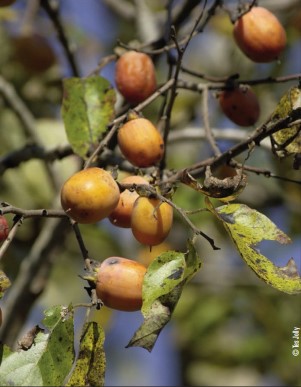
variety of soft mast such as persimmon,
crab apple, pear, or plum, plus hard mast
from sawtooth oak, Chinese chestnut, and
Chinquapin oak.
The Randle Farm is a work in progress. That work started in 1987 when Ned Randle bought an overgrown, abandoned farm that had stood idle for eight years. 27 years later we find ourselves heading back in that direction with parts of the farm.
There are times when we think we have done all we can to make the farm a better place. That is a great feeling. It has never lasted more than a week because there is always more you can do.
Many of our dreams have come true. Today we have more turkeys on the farm than ever before. Each spring we find hens on their nest in habitat we have altered for their benefit. Tes and I both manage to shoot at least one mature buck each season. We even have quail making a comeback.
My happy dreams today are much different than those of my youth. They are still about big whitetail bucks but each buck has a name. He lives on our land and we know him. We have watched him grow and mature while taking advantage of the bounty of the Randle Farm and its neighbors.
Being a gamekeeper is a lifestyle that is all consuming. It requires most of our play money and spare time to achieve the goals we set. The rewards are greater than the sacrifices and we seldom have a problem falling to sleep at night. Time changes everything! The good news is that the changes on the Randle Farm are all better for the wildlife that calls it home!

















